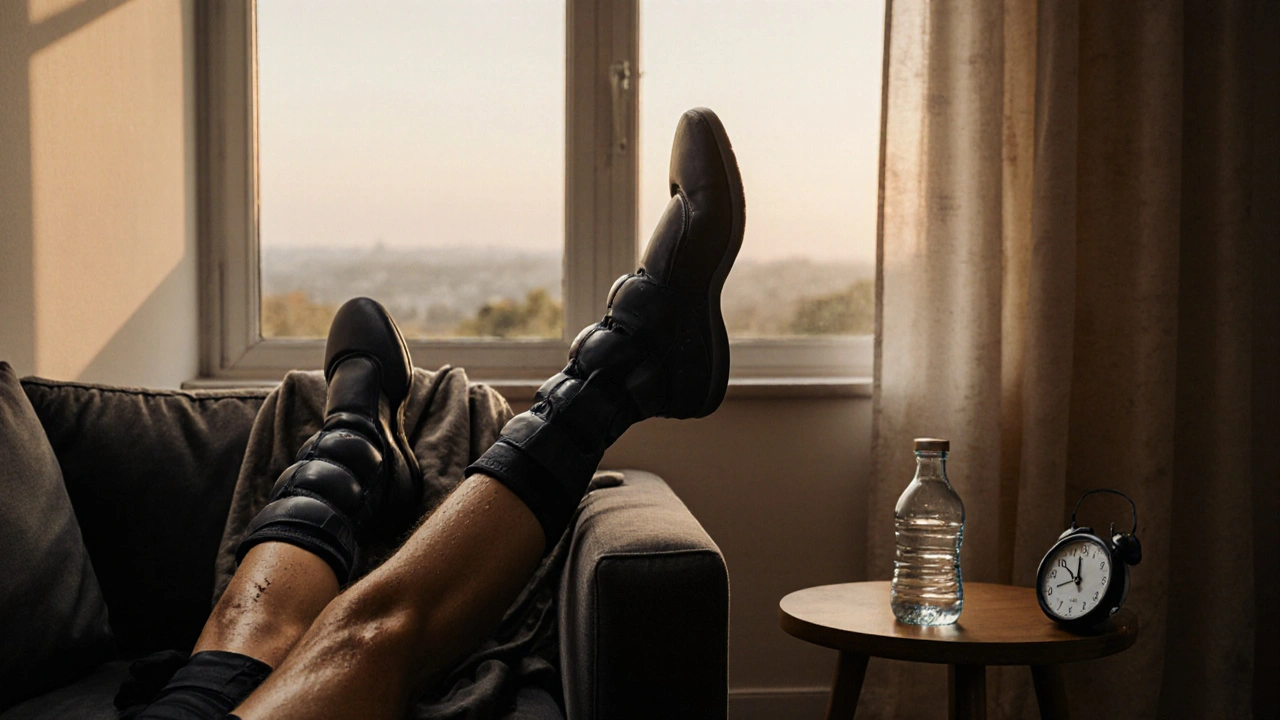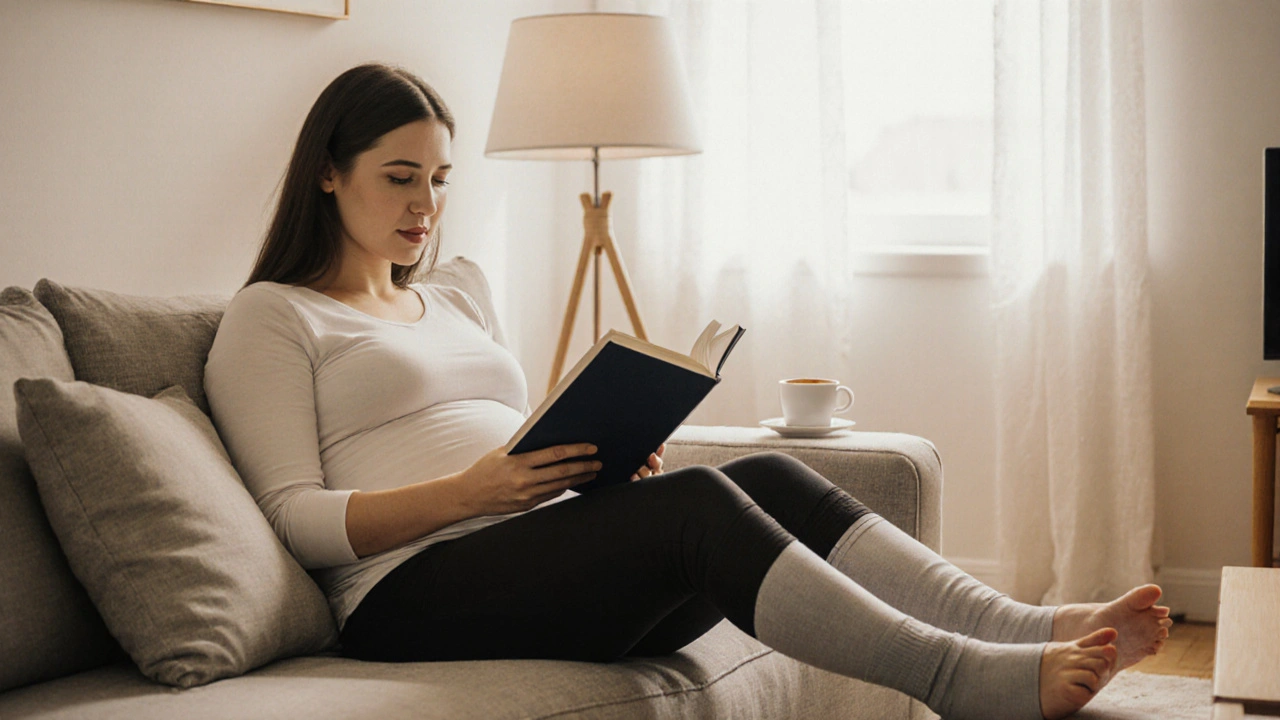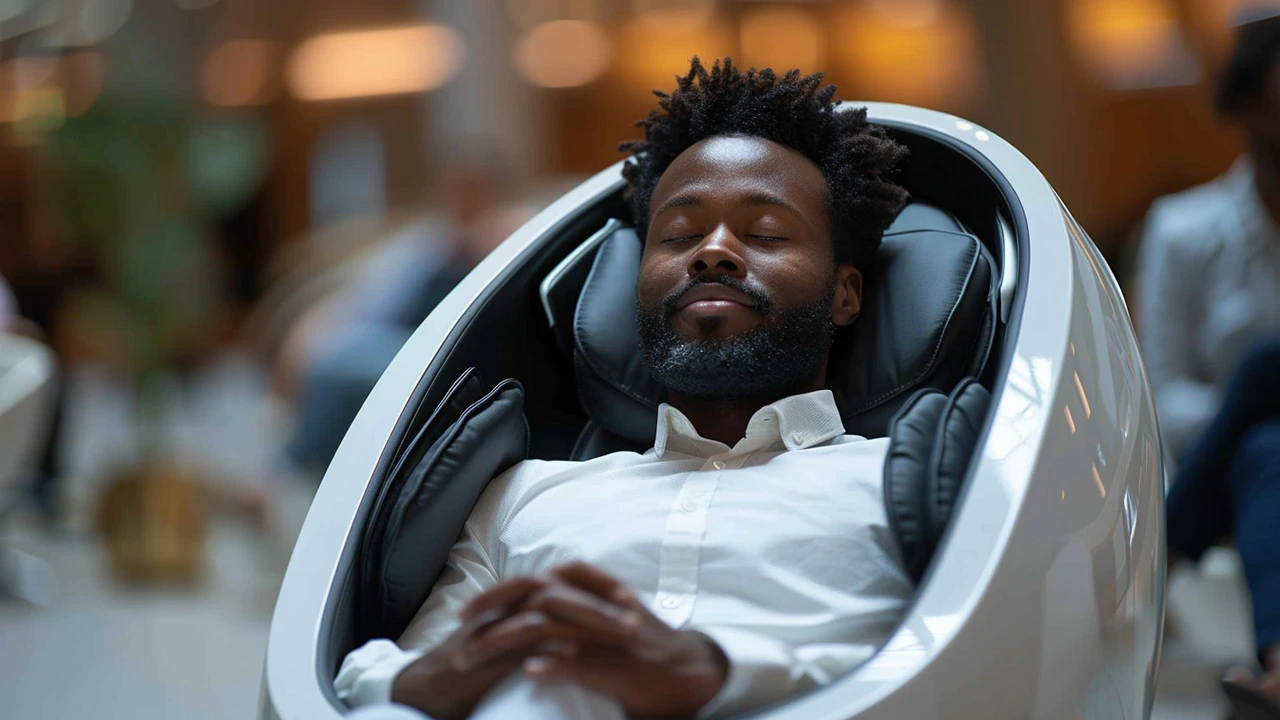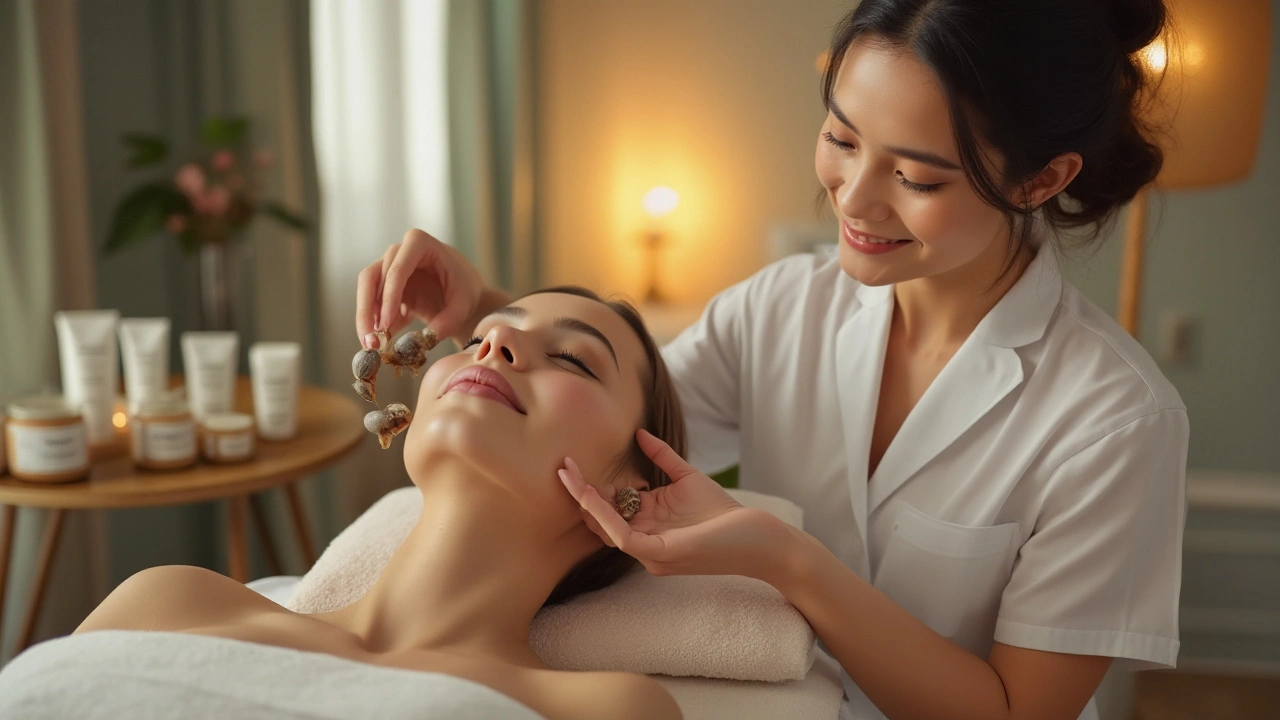Compression Massage: A Comprehensive Guide to Benefits, Techniques, and Use Cases

Compression Device Selector
Select your primary use case to find the compression device that best matches your needs. Based on your selection, we'll recommend the most appropriate device type for your situation.
Select your options above and click "Find My Device" to see your recommendation.
Compression massage isn't just another trendy recovery tool-it’s a proven method used by athletes, physical therapists, and everyday people dealing with sore muscles, swelling, or slow recovery. Unlike traditional massage that relies on hands or rollers, compression massage uses controlled pressure to squeeze and release tissues, helping blood flow, reduce inflammation, and speed up healing. You don’t need a professional spa visit to benefit from it. Many people use compression boots, sleeves, or even handheld devices at home after workouts, long flights, or standing all day.
How Compression Massage Works
Think of your muscles like sponges. When you exercise, waste products like lactic acid build up. Fluid also pools around damaged tissues, causing swelling. Compression massage works by applying rhythmic pressure-like squeezing a sponge-to push that fluid out and bring fresh, oxygen-rich blood in. This process is called intermittent pneumatic compression.
Devices typically use air chambers that inflate and deflate in sequence, starting from the foot and moving upward. This mimics the natural pumping action of your calf muscles, which is why compression therapy is so effective for people who sit or stand for long hours. The pressure isn’t random-it’s calibrated to be firm enough to move fluid but gentle enough to avoid tissue damage.
Studies show that compression therapy can reduce muscle soreness by up to 30% within 24 hours after intense exercise. A 2023 review in the Journal of Athletic Training found that athletes using compression devices recovered faster than those who only stretched or rested. The key? Consistency. One session helps. Regular use changes how your body recovers.
Who Benefits Most from Compression Massage?
Compression massage isn’t just for elite athletes. Here are the top groups who see real results:
- Endurance runners and cyclists-used after long training sessions to reduce leg fatigue and prevent delayed onset muscle soreness (DOMS).
- Office workers and retail staff-those who stand or sit all day often experience swollen ankles and heavy legs. Compression helps circulation and reduces that tired, achy feeling.
- Post-surgery or injury patients-especially after knee or hip replacements, compression reduces swelling and lowers the risk of blood clots.
- Pregnant women-swelling in the legs and feet is common. Many OB-GYNs recommend low-pressure compression sleeves as a safe, drug-free option.
- Travelers on long flights-compression socks or boots help prevent deep vein thrombosis (DVT) by keeping blood moving.
Even people with chronic conditions like lymphedema or venous insufficiency use compression therapy under medical supervision. It’s not a cure, but it’s one of the few non-invasive tools that consistently improves symptoms.
Types of Compression Massage Devices
Not all compression devices are the same. Here’s what’s out there:
| Device Type | Best For | Pressure Range | Use Time | Portability |
|---|---|---|---|---|
| Compression Boots (Leg Sleeves) | Full leg recovery, athletes | 30-200 mmHg | 15-45 minutes | Low |
| Compression Sleeves (Arms/Legs) | Post-workout, daily wear | 15-40 mmHg | 30-60 minutes | High |
| Handheld Compression Massagers | Targeted areas like calves, quads | Adjustable, 10-80 mmHg | 5-15 minutes per area | High |
| Compression Socks | Travel, standing jobs, pregnancy | 8-20 mmHg | Worn all day | Very High |
Boots are the most powerful and are often used in clinics or by serious athletes. Sleeves and socks are more practical for daily use. Handheld units give you control over where the pressure goes-great if you have one sore spot, like a tight hamstring.
When choosing a device, look for FDA-cleared models if you’re using it for medical reasons. Brands like NormaTec, RecoveryAir, and Hyperice have clinical backing. For casual use, many budget-friendly options on Amazon work fine-but avoid ones that don’t let you adjust pressure.

How to Use Compression Massage Safely
Compression massage is low-risk, but it’s not for everyone. Here’s how to use it right:
- Start low-if you’re new, begin with 20-30 mmHg. Increase only if it feels comfortable.
- Time it right-use it within 30 minutes after exercise or physical activity. Don’t use it right before bed unless it’s low pressure; some people feel too alert afterward.
- Check your skin-if you see redness, bruising, or numbness that lasts more than 10 minutes, stop. That’s a sign the pressure is too high.
- Avoid if you have deep vein thrombosis, severe peripheral artery disease, open wounds, or active infections in the area.
- Stay hydrated-compression moves fluid around. Drink water before and after to help your body process it.
Many people make the mistake of using compression for hours. That’s not helpful. Fifteen to thirty minutes is enough. More doesn’t mean better.
Compression vs. Other Recovery Methods
People often compare compression to ice baths, foam rolling, or stretching. Here’s how they stack up:
- Compression vs. Ice Baths-ice reduces inflammation but can also slow healing by constricting blood vessels. Compression improves circulation while reducing swelling. Most athletes now prefer compression after the first 24 hours.
- Compression vs. Foam Rolling-foam rolling targets knots and tight fascia. Compression targets fluid buildup. They work together. Use foam rolling before, compression after.
- Compression vs. Stretching-stretching improves flexibility, but doesn’t move fluid. Compression helps reduce soreness faster, letting you stretch more comfortably the next day.
The best recovery plan mixes all three: dynamic warm-up, foam rolling, compression, and sleep. Compression isn’t the magic bullet, but it’s one of the most efficient tools in the toolbox.

Real Results: What Users Say
I’ve talked to dozens of people in Melbourne who use compression regularly. Sarah, a 38-year-old teacher, started using compression sleeves after standing all day. “My legs used to feel like concrete by 4 p.m. Now I put on my sleeves for 20 minutes after dinner, and I sleep better.”
Mark, a marathon runner, uses boots after long training runs. “I used to need two full days to recover from a 20-miler. Now I’m back to light jogging in 36 hours. I don’t feel as stiff.”
These aren’t outliers. A 2024 survey of 1,200 users found that 78% reported less muscle soreness within 24 hours. Over 65% said they could train more frequently without overtraining symptoms.
When Compression Massage Doesn’t Work
Compression isn’t a fix-all. If you’re still sore after a week, or if swelling gets worse, something else is going on. Compression won’t help with:
- Stress fractures
- Nerve damage
- Chronic pain conditions like fibromyalgia
- Severe arthritis
Also, don’t expect instant results. It’s not like a painkiller. The benefits build over time. Use it consistently for at least two weeks to judge if it’s working for you.
Getting Started: What You Need
If you’re new to compression massage, here’s a simple plan:
- Start with compression socks or a basic sleeve ($30-$60).
- Use it for 20 minutes after your workout or after work.
- Track how you feel-note soreness levels, sleep quality, energy.
- After two weeks, decide if you want to upgrade to boots or a handheld device.
You don’t need to spend hundreds of dollars. Many affordable brands now offer decent pressure control. Look for ones with adjustable settings and automatic timers.
Remember: the goal isn’t to feel intense pressure. It’s to feel supported. If it hurts, you’re doing it wrong.
Can I use compression massage every day?
Yes, most people can use low to moderate compression daily, especially with sleeves or socks. If you’re using high-pressure boots, limit them to 3-4 times a week unless advised by a therapist. Always listen to your body-if you feel numbness, tingling, or increased soreness, take a day off.
Is compression massage the same as lymphatic drainage?
They’re similar but not identical. Lymphatic drainage is a gentle, manual technique that moves fluid through the lymphatic system. Compression massage uses mechanical pressure and is faster. Many compression devices are designed to mimic lymphatic flow, making them effective for reducing swelling. But for serious lymphedema, you still need a trained therapist.
Can compression massage help with cellulite?
No. Cellulite is caused by fat pushing through connective tissue under the skin. Compression may temporarily reduce swelling, making skin look smoother, but it doesn’t break down fat or alter connective tissue. Don’t buy devices marketed as cellulite removers-they’re misleading.
How long should a compression session last?
For most people, 15-30 minutes is ideal. Some devices have automatic programs that run for 20 or 45 minutes. Don’t exceed 60 minutes in one session unless you’re under medical supervision. Longer doesn’t mean better-it can overwork your circulation.
Do I need a prescription for compression massage?
No, not for general use. But if you have a medical condition like venous insufficiency, DVT, or diabetes, talk to your doctor first. Some insurance plans cover compression devices for diagnosed conditions, so ask about reimbursement.
Compression massage is simple, safe, and backed by science. It doesn’t require a lot of time or money to try. Whether you’re an athlete pushing limits or someone just trying to feel better after a long day, it’s one of the few recovery tools that actually delivers on its promises. Start small. Be consistent. Let your body thank you.





